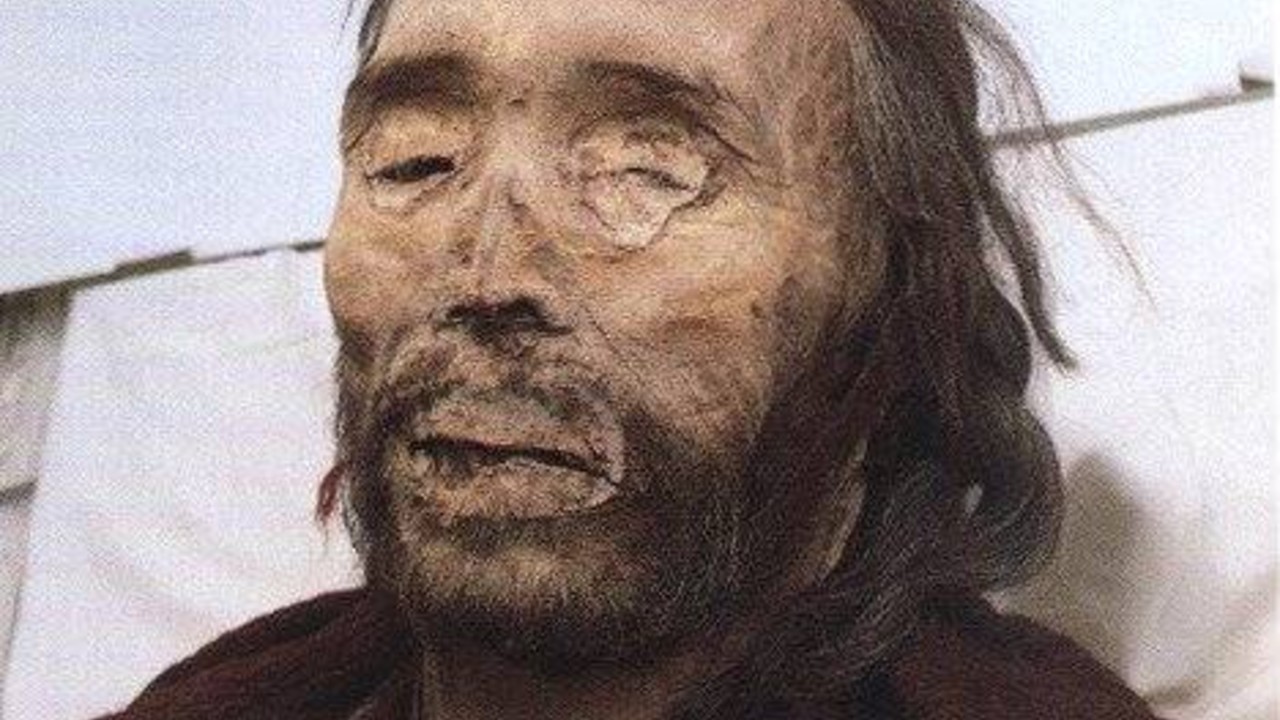The discovery of the Cherchen man in the Taklamakan Desert, Xinjiang Uighur Autonomous Region, China, in 1978, unveiled a remarkable mummy with intriguing European features. Well-preserved and estimated to have lived around 1000 BC, the Cherchen man was found alongside the mummies of three women and a baby. With distinctive physical characteristics, including reddish-brown hair, high cheekbones, and a ginger beard, as well as tattoos and symbols hinting at European origins, his presence in China raises compelling questions about ancient migrations and cultural connections.
The Mystery of Mummification
Despite being unearthed in China, the Cherchen man displays distinct physical features associated with European descent. Descriptions of his reddish-brown hair flecked with grey, high cheekbones, aquiline nose, full lips, and ginger beard reveal a striking resemblance to individuals of European ancestry. He was discovered adorned in a red twill tunic and leggings with a tartan-like pattern, further reinforcing the European link. The tattoos or ochre paint found on his face add to the enigmatic allure of his heritage.

The exceptional preservation of the Cherchen man can be attributed to the arid conditions of the Taklamakan Desert. The dry, salty soil, coupled with extremely cold temperatures, facilitated natural mummification. The mummies found in the Tarim region, including Cherchen man, were carefully interred in tombs made of mud bricks topped with reeds and brush. The thick woolen clothing, possibly made from sheep’s wool, and the presence of small grains of wheat in the tomb suggest a burial during the winter season.
Insights from Studies
Closer examination of the Cherchen man’s genetic makeup has provided valuable insights into his ancestral origins. Through DNA analysis, researchers have determined that he belongs to Haplogroup R1a, a genetic lineage commonly found in western Eurasia. This finding aligns with the Indo-European Afanasevo culture, which flourished in Siberia during the 4th and 3rd millennia BC.
The discovery of European DNA in Cherchen man and his fellow burial companions further supports the notion of their European lineage. It suggests that there were connections and interactions between ancient European populations and the regions of Central Asia and China.

However, the circumstances surrounding Cherchen man’s presence in China continue to elude researchers. How did an individual of European descent find himself buried in the Taklamakan Desert, thousands of miles away from his ancestral homeland? This enigma adds to the allure of the Cherchen man and underscores the complex patterns of ancient migrations and cultural exchanges.
While the exact reasons behind Cherchen man’s journey to China remain unknown, ongoing research and future discoveries may shed more light on his extraordinary story. The study of ancient DNA and continued archaeological investigations offer hope for unraveling the mysteries surrounding this remarkable individual and deepening our understanding of the interconnectedness of ancient civilizations.
Grave Artifacts and Pathology
The tomb of the Cherchen man proved to be a treasure trove of artifacts, providing valuable glimpses into the material culture and lifestyle of his time. Among the discoveries were items such as wheat, woolen cloths, blankets, and an intriguing assortment of ten hats. These grave goods offer valuable clues about the daily lives and fashion preferences of the people from that era.

Upon careful examination, researchers have not found any signs of physical trauma or injury on the remains of the Cherchen man. However, it is hypothesized that he may have fallen victim to an epidemic that swept through the region during his lifetime. This supposition adds another layer of historical context to his story, highlighting the challenges and uncertainties faced by ancient civilizations.
The presence of wheat as a grave offering suggests its importance as a staple crop during that period. Additionally, the inclusion of woolen cloths and blankets emphasizes the significance of textile production and the need for warmth in the region’s harsh climate.
While the cause of Cherchen man’s demise remains speculative, the possibility of succumbing to an epidemic underscores the fragility of human existence and the profound impact of disease on ancient societies.
Through the analysis of grave artifacts and the absence of physical injuries, researchers can reconstruct aspects of Cherchen man’s life and the broader cultural landscape of his time. These findings contribute to our understanding of ancient civilizations and provide valuable insights into the complex interplay between material culture, health, and historical events.
The discovery of the Cherchen man, a well-preserved European mummy in the heart of China, poses captivating questions about ancient migrations and cultural exchanges. With his distinct physical features, tattoos or ochre paint, and genetic ties to western Eurasia, the Cherchen man provides a tantalizing glimpse into the intricate tapestry of human history. While his presence in China remains a mystery, his legacy serves as a testament to the interconnectedness of ancient civilizations and the enduring allure of archaeological discoveries.

